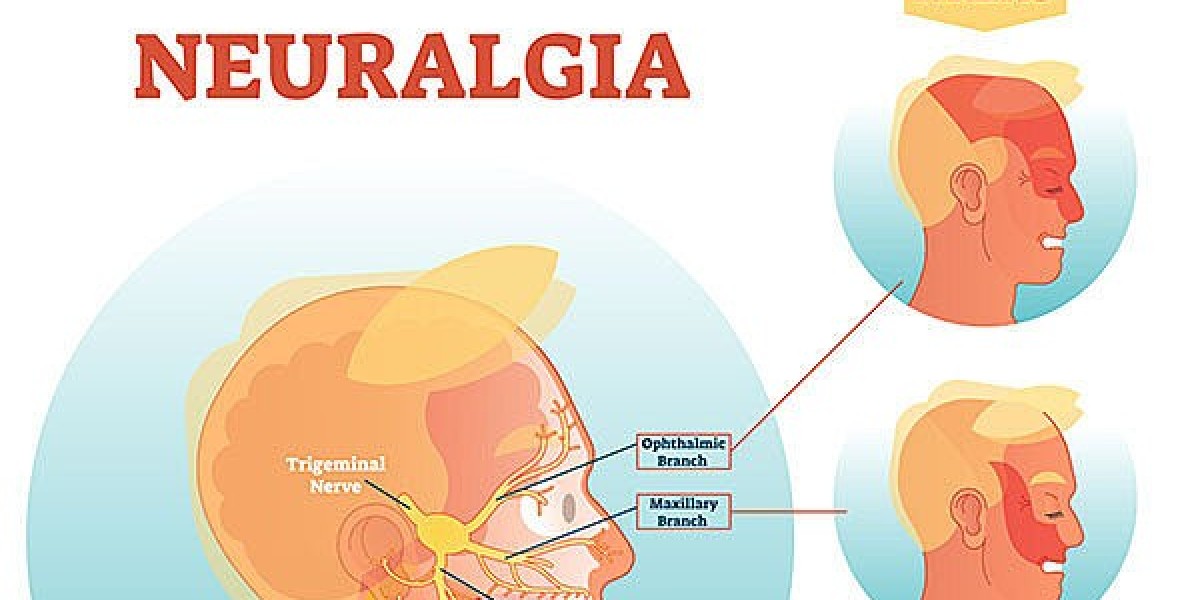If you’ve ever felt a sudden, electric-shock-like pain in your face that appears without warning and leaves you exhausted or anxious, you might be experiencing trigeminal neuralgia (TN). Often misunderstood or misdiagnosed, TN is one of the most painful neurological disorders and can dramatically impact your life. Knowing how to identify and manage it is key to regaining control.
This article breaks down trigeminal neuralgia explained: diagnosis and pain management in everyday language, helping you understand how it's diagnosed, what treatments are available, and how to navigate life with it.
What is Trigeminal Neuralgia?
Trigeminal neuralgia affects the trigeminal nerve, which is responsible for transmitting sensations from your face to your brain. When this nerve malfunctions—often due to pressure from a nearby blood vessel—it can result in intense, sudden facial pain.
People with TN describe the pain as stabbing, burning, or like an electric shock. Episodes can last from a few seconds to a couple of minutes and may repeat throughout the day. Simple actions like brushing your teeth, talking, or even a breeze on your face can trigger attacks.
Causes and Risk Factors
1. Nerve Compression
The most common cause of TN is blood vessel compression near the brainstem. This compression damages the protective covering of the nerve (myelin), causing it to misfire.
2. Multiple Sclerosis (MS)
People with MS can develop TN because MS also breaks down the myelin sheath.
3. Tumors or Lesions
In rare cases, tumors pressing on the trigeminal nerve can cause similar symptoms.
4. Trauma or Surgery
Facial injuries or complications from surgeries may trigger TN symptoms.
5. Age and Gender
TN most often occurs in people over 50, and women are more commonly affected than men.
Symptoms to Watch For
Trigeminal neuralgia symptoms vary from person to person but generally include:
Sudden, severe facial pain on one side
Pain in the jaw, cheek, teeth, or lips
Attacks lasting seconds to minutes
Triggered by light touch, eating, or speaking
Pain-free periods between episodes
Gradual worsening of attacks over time
Some people experience a constant, dull ache in addition to sharp episodes.
Trigeminal Neuralgia Explained: Diagnosis and Pain Management
Early and accurate diagnosis is crucial for treating TN effectively. Here’s how medical professionals confirm the condition and guide patients toward relief.
Diagnosis Process
1. Medical History and Symptom Review
Doctors begin by reviewing your symptoms in detail, including the type, location, and triggers of your pain.
2. Physical and Neurological Exam
Tests are done to evaluate your reflexes, sensation, and rule out other conditions like dental issues or migraines.
3. Imaging Tests
MRI Scans: Help detect compression of the nerve, tumors, or signs of MS.
MRA (Magnetic Resonance Angiography): A specific type of MRI used to see blood vessels and nerve interactions.
These tests are not only diagnostic tools but also help guide treatment decisions.
Pain Management Strategies
Managing TN often involves a personalized plan combining medications, lifestyle changes, and in some cases, surgery.
Medications
Anticonvulsants
Drugs like carbamazepine and oxcarbazepine help stabilize overactive nerve signals. These are usually first-line treatments.
Muscle Relaxants
Medications such as baclofen may be used when anticonvulsants alone are not enough.
Tricyclic Antidepressants
Useful especially when patients experience burning or aching in addition to sharp pain.
Note: Medication doses and types must be managed carefully due to potential side effects like dizziness, fatigue, or cognitive slowing.
Surgical Options
When medications are no longer effective or cause side effects, surgery may be considered:
Microvascular Decompression (MVD)
A neurosurgeon moves the blood vessel away from the nerve. This procedure offers long-term relief for many patients.
Rhizotomy
Destroys part of the trigeminal nerve to reduce pain signals. Done using heat (radiofrequency), injections (glycerol), or balloon compression.
Gamma Knife Radiosurgery
A non-invasive method that uses focused radiation to damage the nerve fibers and reduce pain.
Complementary Treatments
Many patients find benefit in combining traditional medical care with complementary approaches:
Acupuncture
Chiropractic adjustments
Biofeedback therapy
Mindfulness meditation
Always consult your healthcare provider before adding these to your routine.
Coping with Daily Life
Living with TN requires resilience and planning. Here are some tips to improve your quality of life:
Track your triggers and symptoms in a journal
Modify your diet with softer foods and avoid extreme temperatures
Dress for protection (e.g., scarves during wind exposure)
Maintain dental hygiene using soft brushes and mild toothpaste
Use voice-to-text apps during flare-ups to reduce talking
Emotional Health and Support
The emotional impact of TN is often underestimated. Chronic pain can lead to anxiety, depression, and social withdrawal.
Support Options:
Therapists or psychologists familiar with chronic illness
Support groups (online and offline)
Family and friends—educate them about TN to foster understanding
You don't have to go through it alone. Emotional health is essential to managing physical pain.
Helpful Resources
FlowCare’s TN Support Resource
The Facial Pain Association
WebMD and Mayo Clinic TN sections
National Institute of Neurological Disorders and Stroke
These sites offer tools for tracking symptoms, understanding treatment, and finding community.
Long-Term Outlook
TN is a chronic condition, but that doesn’t mean a life of constant suffering. With the right combination of treatments, most patients experience significant improvements. Some even go into remission for long periods.
Proactive care, consistent follow-ups, and an informed, patient-first approach offer the best results.
Conclusion
Trigeminal neuralgia is a complex and often misunderstood condition—but knowledge is your best tool. From understanding your symptoms to learning about diagnosis and treatments, every step you take empowers you to live better. If you're searching for clarity on trigeminal neuralgia explained: diagnosis and pain management, this guide is here to help.
Take control, seek support, and never stop asking questions. Relief is possible—and you’re not alone.
FAQs
1. How is trigeminal neuralgia diagnosed?
Diagnosis involves reviewing symptoms, performing neurological exams, and using MRI scans to identify nerve compression or other causes.
2. Is trigeminal neuralgia permanent?
It’s a chronic condition, but many patients experience relief through medication, surgery, or a mix of treatments.
3. What’s the most effective treatment for TN?
Microvascular decompression offers long-term relief for many, but the right treatment depends on the individual.
4. Can stress worsen TN symptoms?
Yes. Stress is a known trigger and can increase the intensity and frequency of pain attacks.
5. Are there any home remedies?
While no home remedy can cure TN, relaxation techniques, warm compresses, and dietary adjustments may provide comfort.







